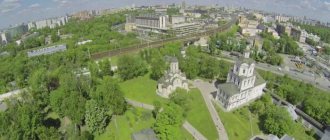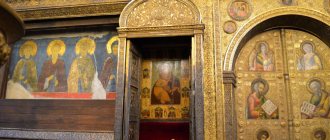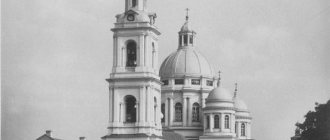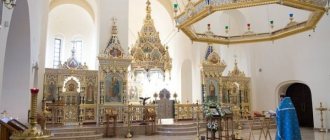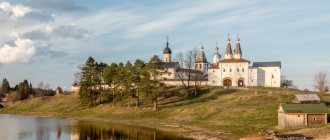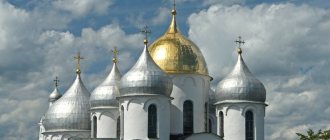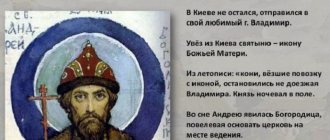Mir
Russia Vladimir region Vladimir Dmitrievsky Cathedral (Vladimir) Map loading in progress...
{"format":"leaflet","minzoom":false,"maxzoom":false,"limit":50,"offset":0,"link":"all","sort":[""], "order":[],"headers":"show","mainlabel":"","intro":"","outro":"","searchlabel":"\u2026 \u0441\u043b\u0435\ u0434\u0443\u044e\u0449\u0438\u0435 \u0440\u0435\u0437\u0443\u043b\u044c\u0442\u0430\u0442\u044b","default":"","import-annotation":false,"width ":"auto","height":"350px","centre":{"text":"","title":"""link":"""lat":56.12905599999999850524545763619244098663330078125,"lon": 40.41082999999999714191289967857301235198974609375,"icon":""},"title":"","label":"","icon":"","lines":[],"polygons":[],"circles":[ ],"rectangles":[],"copycoords":false,"static":false,"zoom":8,"defzoom":14,"layers":["OpenStreetMap"],"image layers":[] ,"overlays":[],"resizable":false,"fullscreen":true,"scrollwheelzoom":true,"cluster":false,"clustermaxzoom":9,"clusterzoomonclick":true,"clustermaxradius":80, "clusterspiderfy":true,"geojson":"","clicktarget":"","showtitle":true,"hidenamespace":false,"template":"","userparam":"","activeicon": "","pagelabel":false,"ajaxcoordproperty":"","ajaxquery":"","locations":[{"text":"\u003Cb\u003E\u003Ca href=\"/palomnik/%D0% 94%D0%BC%D0%B8%D1%82%D1%80%D0%B8%D0%B5%D0%B2%D1%81%D0%BA%D0%B8%D0%B9_%D1%81% D0%BE%D0%B1%D0%BE%D1%80_(%D0%92%D0%BB%D0%B0%D0%B4%D0%B8%D0%BC%D0%B8%D1%80)\ » title=\»\u0414\u043c\u0438\u0442\u0440\u0438\u0435\u0432\u0441\u043a\u0438\u0439 \u0441\u043e\u0431\u043e\u0440 (\u0412\u043b\u 0430\u0434\u0438 \u043c\u0438\u0440)\»\u003E\u0414\u043c\u0438\u0442\u0440\u0438\u0435\u0432\u0441\u043a\u0438\u0439 \u0441\u043e\u0431\u043 e\u0440 (\u0412\u043b \u0430\u0434\u0438\u043c\u0438\u0440)\u003C/a\u003E\u003C/b\u003E\u003Chr /\u003E\u003Ca href=\"/palomnik/%D0%A1%D0%B2%D0% BE%D0%B9%D1%81%D1%82%D0%B2%D0%BE:%D0%90%D0%BD%D0%BD%D0%BE%D1%82%D0%B0%D1%86 %D0%B8%D1%8F\" title=\"\u0421\u0432\u043e\u0439\u0441\u0442\u0432\u043e:\u0410\u043d\u043d\u043e\u0442\u0430\u0446\u0438\u044f\ "" 430\u0442\u0430\u0441 \u043e\u043e\u0440\u0443\u0436\u0435\u043d\u0438\u044f \u0414\u043c\u0438\u0442\u0440\u0438\u0435\u0432\u0441\u043a\u043e\u 0433\u043e\u0441\u043e\u0431 \u043e\u0440\u0430 \u0434\u043e \u0441\u0438\u0445 \u043f\u043e\u0440 \u043d\u0435\u0438\u0437\u0432\u0435\u0441\u0442\u043 d\u0430,\u043d\u043e\u043c\ u043d\u043e\u0433\u0438\u0435 \u0438\u0441\u0441\u043b\u0435\u0434\u043e\u0432\u0430\u0442\u0435\u043b\u0438 \u0443\u043a\u0 430\u0437\u044b\u0432\u0430\ 1194 1197 0434\u0430\u043c\u0438. 1992 1992 1992 1992 1992 \u043f\u0430\u043c\u044f\u0442\ u043d\u0438\u043a\u043e\u0432 \u0412\u0441\u0435\u043c\u0438\u0440\u043d\u043e\u0433\u043e \u043d\u0430\u0441\u043b\u0435\u0 434\u0438\u044f\u042e\u041d\ u0415\u0421\u041a\u041e.","title":"\u0414\u043c\u0438\u0442\u0440\u0438\u0435\u0432\u0441\u043a\u0438\u0439 \u0441\u043e\u0431\u0 43e\u0440 ( \u0412\u043b\u0430\u0434\u0438\u043c\u0438\u0440)","link":"","lat":56.12905599999999850524545763619244098663330078125,"lon":40.41082 999999999714191289967857301235198974609375,"icon":""}],"imageLayers" :[]}
56.129228; 40.410929
Russia, Vladimir, Bolshaya Moskovskaya street, 60
Vladimir, Vladimir region600000
Russia
Telephone:
+7 492 232-24-67
Dmitrievsky Cathedral in the city of Vladimir
(sometimes in literature you can find the name “Dmitrovsky”) - a court cathedral erected by Vsevolod the Big Nest at the princely court and consecrated in honor of the Great Martyr Demetrius of Thessalonica. A canonical example of a cross-domed white stone church of the Vladimir-Suzdal architectural school. Famous for its white stone carvings. The exact date of construction of the Demetrius Cathedral is still unknown, but many researchers point to the period between 1194 and 1197. In 1992 it was included in the list of UNESCO World Heritage Sites.
History[edit]
Built during the era of the greatest power and prosperity of the great Vladimir principality by the Grand Duke of Vladimir Vsevolod Yuryevich the Big Nest in honor of his heavenly patron Dmitry of Thessaloniki (Prince Vsevolod in baptism bore the name Dmitry). According to Nikolai Voronin, built in 1194-1197; according to chronicle data discovered in the 1990s by Tatyana Timofeeva - in 1191. The temple was built from white limestone stone. The temple was built by Russian craftsmen.
In 1197, the construction of the temple was completed by Prince Vsevolod Yuryevich with the installation of an icon of Dmitry of Thessaloniki and a chased silver reliquary, which contained a “shirt” - a piece of clothing soaked in the blood of the martyr:
And he brought the tombstone of the holy martyr Dmitry from Selun, who constantly exudes myrrh for the health of the weak, placed it in the same church, and placed the shirt of the same martyr here.
In 1237, the cathedral was destined to share the fate of the capital of the Vladimir principality. Damaged and plundered by the Mongol-Tatars, the temple subsequently burned more than once (in 1536, 1719 and 1760) and was looted.
As a result of the “restoration” of 1837-1839, when, by order of Nicholas I, the cathedral was given a “primitive appearance”, the temple lost its most interesting parts - staircase towers and galleries.
In Soviet times, the Dmitrievsky Cathedral was preserved only as a monument of ancient Russian art. In 1918, the Commission for the Preservation of Painting Monuments worked in the cathedral under the leadership of Igor Grabar. In 1919, the temple was closed for worship. The cathedral was restored several times. After the final stage of work carried out in 1999-2004, drainpipes were installed in the church, the cross on the dome was replaced, a microclimate was created, and the reliefs and white stone were covered with a protective plastic mixture.
Story
At the end of the 12th century, Prince Vsevolod the Big Nest ordered the construction of a temple on the territory of his estate in honor of the saint. Russian and Greek masters were invited to work on the Grand Ducal Cathedral, and its opening took place around 1997. Then artifacts belonging to Saint Demetrius were brought from Saluni (now Thessaloniki).
Later, St. Demetrius Cathedral was subjected to enemy raids and fires, after which it was renovated. During the process of inept restorations, the external appearance of the building was distorted and most of the frescoes were lost. During the revolution of 1917, the church was transferred to the Vladimir City Museum, and 20th century restorers were able to extract fragments of the original frescoes from under the plaster and protect the white stone carvings. Now the cathedral is operational, it is open to parishioners and tourists.
Current state[edit]
Currently, the cathedral is under the jurisdiction of the Vladimir-Suzdal Museum-Reserve and is open as a museum exhibition. There are no services in the temple.
Architecture[edit]
Plan of the Demetrius Cathedral
The cathedral is single-domed, four-pillared, three-apsed. Initially, the cathedral was surrounded by galleries with staircase towers, connecting it with the princely palace (dismantled during restoration in the 19th century), along which the prince and his family went to the temple for worship.
The facade of the cathedral consists of three tiers, the lower one is devoid of decoration, and only carved portals are visible against its background. The second tier is an arcature columnar belt with white stone figures and ornaments. The third tier is cut through with narrow windows and completely covered with carvings, which are also noticeable on the dome drum. The cathedral is crowned with a gilded shallow dome in the shape of a hero’s helmet. A wide cross made of gilded copper is erected on the dome.
On the southern facade of the temple there is a large-scale composition “The Ascension of Alexander the Great into Heaven.” The plot of the composition is not traditional for an Orthodox church, but it was very popular in the 12th century. In the arms of Alexander the Great sit small lion cubs, which so attract griffins - terrible monsters.
The psalmist King David, singing and sitting with a harp in his hands, is the main figure in the decoration and occupies a central place on all facades.
Dmitrievsky Cathedral is small in size, since it was built only for the prince’s family and was his home church.
Reliefs[edit]
The cathedral is famous for its white stone carvings - its walls are decorated with about 600 reliefs depicting saints, mythical and real animals. Most of the reliefs were preserved in their original form, some were replaced during the restoration of the 19th century (according to M. S. Gladkaya, almost exact copies).
The glorification of princely power was the main idea of the facade sculpture of the cathedral, therefore it depicts many heraldic symbols - lions, eagles, griffins, centaurs, scenes of hunting, fighting animals, etc.
Interior decoration[edit]
From the interior decoration, several fragments of frescoes from the 12th century have reached us, in particular, fragments of the composition “The Last Judgment”.
The exhibition includes a four-meter domed cross with a perforated ornament, removed from the head of the cathedral and replaced in 2002 with a remake, as well as an icon of Dmitry of Thessaloniki and a reliquary reliquary, brought to the temple in 1197, which subsequently ended up in Moscow and returned back to the cathedral from the capital museums in copies. Among the exhibits is also the tombstone of the first Vladimir governor, Count Roman Vorontsov.
Interior decoration of Dmitrievsky Cathedral
There is now a museum inside the cathedral. This ensures the ideal temperature and humidity to preserve the unique white stone. In addition, the absence of traditional elements of interior decoration allows one to see the entire majestic structure of the temple.
Vaults and drum of Dmitrievsky Cathedral
The capitals of the inner pillars are decorated with lions.
Lions
The surviving fragments of the 12th-century “Last Judgment” fresco under the choir in the western part of the temple are unique. It depicts the apostles sitting on thrones, with angels standing behind them. Perhaps the author was a Greek master. Some researchers believe that there were two authors: Greek and Russian origin.
"The Last Judgment"
There is now an old cross in the altar of St. Demetrius Cathedral. The crescent moon under the cross is often interpreted as an ancient symbol of priesthood power.
Old cross in the altar of St. Demetrius Cathedral
Old cross in the altar of St. Demetrius Cathedral
Decoration of Dmitrievsky Cathedral
Dmitrevsky Cathedral from the inside
Detail of the gate of St. Demetrius Cathedral
Reminder for newlyweds
Where to stay
Vladimir is a hospitable city with a developed tourist infrastructure designed for millions of visitors. The top ten best hotels according to the ratings of some online resources include the park hotel Pearl of the Golden Ring, hotels at the Golden Gate, Erlangen House, Russian Village, Amaks Golden Ring, Prince Vladimir, Klyazma, Zarya, Dobroye, Motel Ochag. The price range is from 1880 to 5600 rubles per day per room. More economical accommodation in hostels Everest, Pilgrim, Samovar, Vozdukh, Wow - from 500 to 1990 rubles per day.
Repairs and restorations
Initially, after construction, the cathedral looked completely different. The central temple was surrounded on three sides by stone galleries, richly decorated with carvings. The first renovation work in the temple was carried out in the 15th century; the temple retained its grand ducal significance, but later the privileges were lost. In the 16th and 17th centuries, cosmetic work was carried out. No efforts were made to preserve the uniqueness of the temple; with each “improvement” it lost part of its individuality - decorative details and parts of the structure were lost, and frescoes inside the premises were lost.
The greatest damage, according to modern historians, was caused to the cathedral in the 19th century. Emperor Nicholas I arrived on a visit to Vladimir in 1834. Having examined the temple, he noticed its extreme disrepair. By his order, the church was restored to its “primitive appearance.” They got down to business with zeal, and as a result the ancient gallery was dismantled. They also barbarically got rid of the northern and southern towers with internal staircases leading to the choir.
After all the work, the Vladimir Cathedral irretrievably lost part of its identity, and the building’s structure was also damaged. In 1840-47, another “renewal” took place; now the ancient frescoes inside the temple were destroyed, and a new painting appeared in their place. The floor was also lowered, a new iconostasis was installed, and a spiral staircase was installed to access the choirs inside the room.
Reviews
Demetrius Cathedral, century after century, confirms its uniqueness and significance for Russian culture. Thousands of tourists come to see it every year, and for everyone the white-stone temple becomes a revelation. Visitors say that the carvings on the walls are incredibly beautiful and are found almost nowhere else. You can look at it endlessly, there is so much of it on each of the facades.
Some complained that the exhibition inside the temple is very modest, but is compensated by the architecture and beauty of the building. Not everyone was able to get inside the cathedral, but there is an observation deck nearby, which offers views of the river and the surrounding landscape. Most tourists recommend visiting St. Demetrius Cathedral to personally feel the breath of time and the connection between generations.
Relics
Saint Dmitry was revered by Christians as the patron saint of warriors. His life indicates that he held the position of proconsul in the city of Thessalonica, which the inhabitants of ancient Rus' called Thessaloniki. Having learned that Dmitry is a Christian, Emperor Galerius throws him into prison and then orders him to be stabbed to death with spears. The body of the martyr is given to wild animals to be eaten, but they do not touch him. Later, the Christians of the city interred the remains of the saint. Years later, Emperor Constantine comes to Thessalonica and, at the site of Dmitry’s execution, founds a church in which the saint’s relics are kept today.
So, having consecrated his Dmitrov Cathedral in Vladimir (the description is presented above), Prince Vsevolod set off in the footsteps of Constantine and brought some relics from the Thessalonica temple for this church. They were an icon depicting the Great Martyr of Thessaloniki, written on his coffin board, and a piece of clothing on which there were drops of the saint’s blood.
Visiting of museum
Divine services are held in Vladimir's Dmitrievsky Cathedral five times a year. The main holiday is still the day of memory of Dmitry Solunsky - November 8. The rest of the time it is a museum, where the main exhibit is the temple itself.
Exposure operating time:
- Monday – Thursday – 10:00-16:00.
- Friday, Sunday – 10:00-17:00.
- Saturday – from 10:00 to 18:00.
Address: Bolshaya Moskovskaya street, building 60.
You can get there by public transport to the “Cathedral Square” stop:
- Bus routes No. 28, 12C, 22, 26, 15 or 25.
- By trolleybus routes No. 5, 1.
Facade decor
In the white stone carved decoration of the cathedral walls, a strict rhythm and clarity of tiers are clearly visible:
- The first lower belt of the facades is completely devoid of decoration, as it was originally hidden by auxiliary buildings: stairs and galleries to the princely mansions. These buildings were dismantled in the middle of the 19th century, and fragments of carvings were used to restore the lost reliefs of the building.
- The second tier is represented by rich carved ornaments of an arcature-columnar belt.
- In the upper zone there are tall and narrow lancet windows. He is all directed upward, personifying heavenly and spiritual aspiration. The third tier with a cylindrical drum is completely decorated with the finest openwork carvings.
Vertical pilasters segment the façade and subordinate the carved decor to the architectural structural integrity.
A distinctive decorative feature can be noted in the line and ornamentation of the ordered carving of the cathedral with its architecture. The stylistic rethinking of images by Vladimir carvers created the uniqueness and originality of the Russian sculptural decoration of the building’s facades.
How to get to the temple
Every day, electric trains run from Kursky Station in Moscow to Vladimir. Travel time is approximately 3 hours. You can get there on a branded train or on the Sapsan high-speed train, but it will be somewhat more expensive. Regular buses run from the Central Bus Station, near the Shchelokovo metro station. The journey will take the same amount of time as by train.
You can get to Vladimir's Cathedral Square, where the Dmitrievsky Cathedral is located, by buses and trolleybuses.
